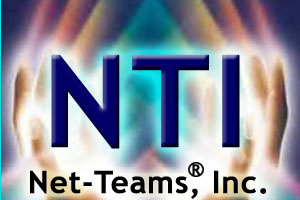 |

Public Companies to Provide New Disclosures to Investors |
|
|
Submitted by Janeane Carnagie
| RSS Feed
| Add Comment
| Bookmark Me!
Investors in the nation's publicly traded companies will soon have access to an unprecedented level of corporate information when companies issue their annual reports, which, for the first time ever, will include details about their internal control over financial reporting and provide a greater degree of transparency.
To help investors understand the new reporting, Deloitte & Touche, Ernst & Young, KPMG and PricewaterhouseCoopers have developed two easy-to-use resource guides.
When a company measures its internal control over financial reporting, it monitors the vital processes involved in recording transactions and preparing financial reports. A company now must make public its assessment of the effectiveness of its internal control over financial reporting, including an explicit statement as to whether that control is effective and whether management has identified any "material weakness."
The company's independent auditor will evaluate management's assessment and express an opinion on that assessment. This information is to appear in corporate annual reports starting in February 2005.
These new disclosures were put in place by the federal government in response to the series of business failures and corporate scandals that began with Enron in 2001. The disclosures are important to investors because effective internal control over financial reporting helps improve the reliability of financial reports and can be a deterrent to corporate fraud.
To use this information effectively, investors should consider that a material weakness in internal control over financial reporting does not mean that a material financial misstatement has occurred or will occur, but that it could occur. It is a warning flag.
A material weakness should be evaluated in the context of the company's specific situation, including consideration of the following areas.
* Fraud: Does the weakness involve corporate fraud by senior management?
* Duration: Was the weakness the result of a temporary breakdown or a more systemic problem?
* Pervasiveness: Does the weakness relate to matters that may have a pervasive effect on financial reporting?
* Relevance: Is the weakness related to a process that is key to the company?
* Investigation: Is the weakness related to a current regulatory investigation or lawsuit?
* History: Does the company have a history of restatements?
* Management reaction: How has management reacted to the material weakness?
* Tone at the top: Does the weakness represent a concern with the "tone at the top"?
Material weaknesses can occur in any part of the financial reporting process, and may vary with a company's characteristics, the industry and the business environment. The new disclosures do not address the soundness of a company's business strategies or its ability to achieve financial goals. www.s-oxinternalcontrolinfo.com.- NU
|
|
 |

|
|
LinkedIn Recommendation:
 Felice Amon - SEO Account Manager at Gadgetron - I have been watching Teo's business grow over these last few years and am amazed at how he keeps coming up with new applications and marketing. I really don't know how he can do all this! But, I finally hire him to do some Google marketing for my company, and we were on the first page of Google in less than a week. I am amazed. I am now working with him regularly and don't see that changing! Great work! - March 15, 2012, Felice was Teo's client Felice Amon - SEO Account Manager at Gadgetron - I have been watching Teo's business grow over these last few years and am amazed at how he keeps coming up with new applications and marketing. I really don't know how he can do all this! But, I finally hire him to do some Google marketing for my company, and we were on the first page of Google in less than a week. I am amazed. I am now working with him regularly and don't see that changing! Great work! - March 15, 2012, Felice was Teo's client |
|
Featured [Investing] Articles:
|
 |
